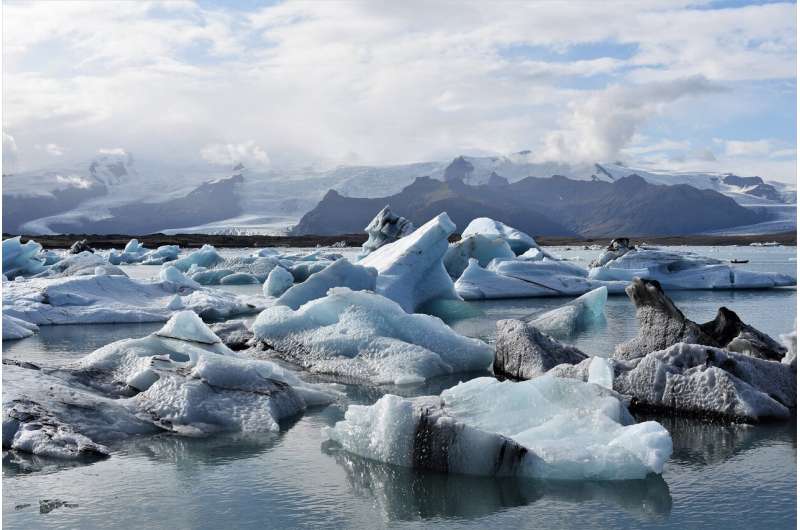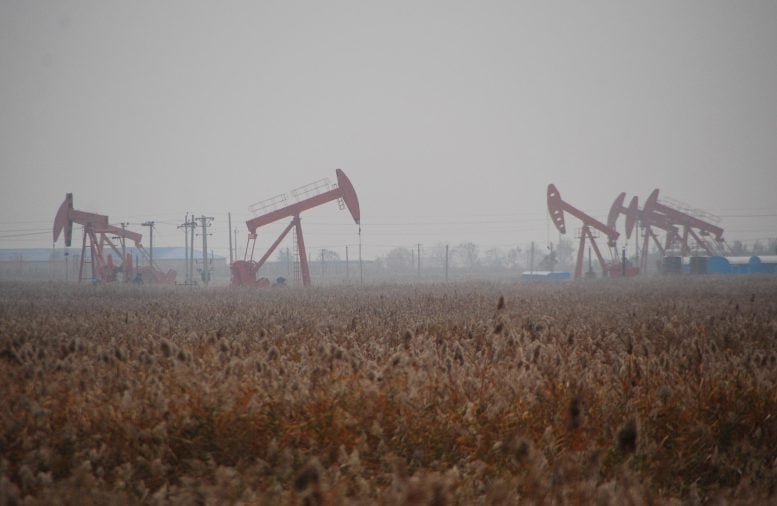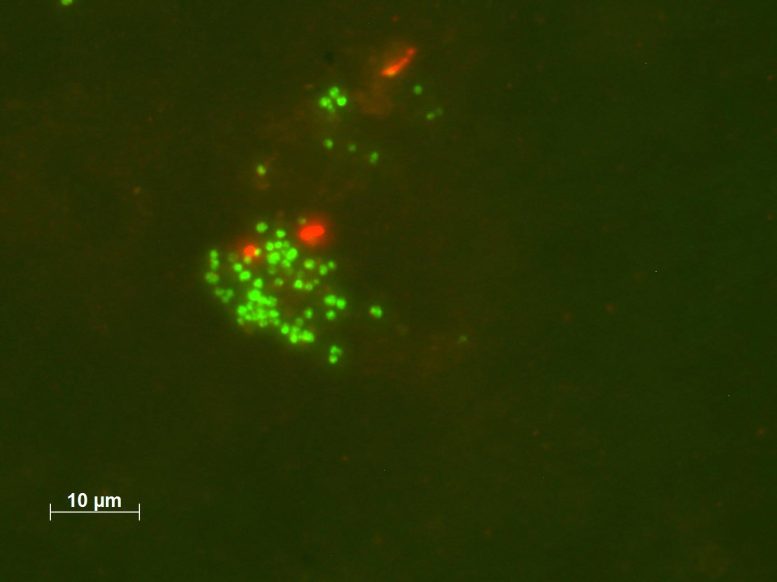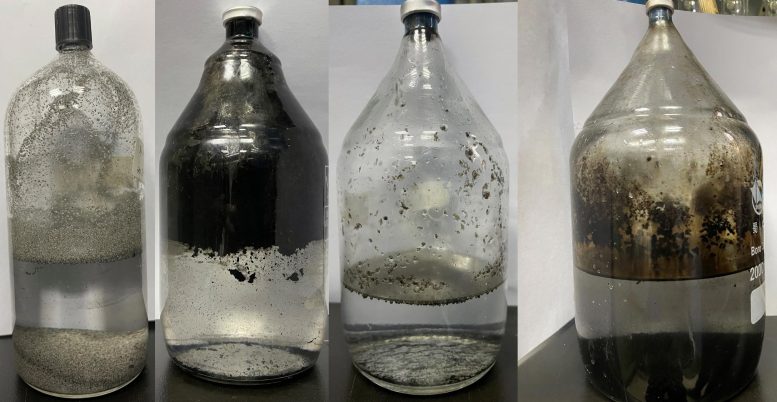Melting Arctic ice will have catastrophic effects on the world, experts say. Here's how.

Melting Arctic ice will have catastrophic effects on the world, experts say. Here's how.
JULIA JACOBO
Fri, December 24, 2021
If there is any doubt about climate change, look no further than the coldest regions of the planet for proof that the planet is warming at unprecedented rates, experts say.
The Arctic, is heating up twice as fast as the rest of the world, according to this year's Arctic Report Card, released last week by the National Oceanic and Atmospheric Administration. The phenomenon, known as Arctic amplification, occurs when the sea ice, which is white, thins or disappears, allowing dark ocean or land surfaces to absorb more heat from the sun and release that energy back into the atmosphere.
Widely considered by polar scientists as Earth's refrigerator due to its role in regulating global temperatures, the mass melting of sea ice, permafrost and ice caps in the Arctic is hard evidence of global warming, according to experts.
"The Arctic is the frontline for climate change," climate scientist Jessica Moerman, vice president of science and policy at the Evangelical Environmental Network, a faith-based environmental group, told ABC News. "We should be paying careful attention to what is happening in the Arctic. It may seem like it's far away, but the impacts come knocking on our front door."
MORE: The Arctic is warming twice as fast as the rest of the world, according to NOAA report
Here is how melting in the Arctic could have detrimental effects around the globe, according to experts:
Coastal communities will eventually need to move inland
The biggest long-term effect of warming in the Arctic will be sea level rise, Oscar Schofield, a professor of biological oceanography at Rutgers University, told ABC News.
Melting from he Arctic -- and the Greenland ice sheet in particular -- is the largest contributor to sea level rise in the world. Although the contribution from the Greenland ice sheet is less than a millimeter per year of rising sea level, those small increments add up to between 6 inches to a foot since the Industrial Revolution -- sea levels that infrastructure near oceans was not built to withstand, Schofield said.
A bit "counterintuitively," the loss from the Greenland ice sheet will have its greatest impact on places far away from the Arctic, in low latitudes such as South America due to changes in the global ocean currents, Twila Moon, an Arctic scientist with the National Snow and Ice Data Center and one of the authors of the Arctic Report Card, told ABC News.
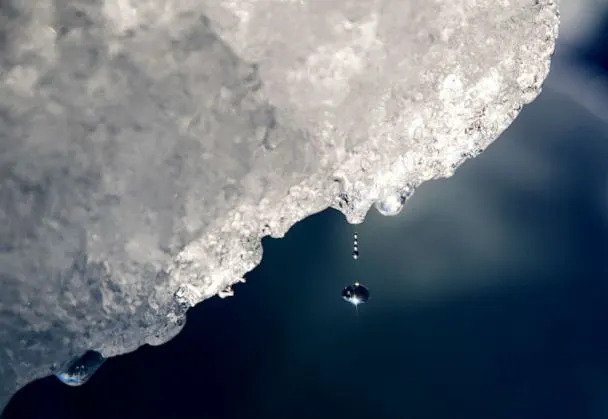
PHOTO: A drop of water falls off an iceberg melting in the Nuup Kangerlua Fjord near Nuuk in southwestern Greenland, Aug. 1, 2017. (David Goldman/AP, FILE)
Sea level rise from melting and continued climate change will exacerbate coastal erosion, flood areas that had previously never seen flooding and even increase inland flooding as the salty ocean waters change groundwater tables and inundate freshwater resources, Moon said.
"If you look at where humanity lives, a great proportion of humanity lives right at the coastlines around the world," he said. "And if you look at where most of the big, mega cities are, they're right along coastlines: New York, Los Angeles, San Francisco."
MORE: Polar bears are inbreeding due to melting sea ice, posing risk to survival of the species, scientists say
Global weather systems will shift drastically
The environmental conditions in the Arctic affect weather systems across the world. The North and South poles act as the "freezers of the global system," helping to circulate ocean waters around the planet in a way that helps to maintain the climates felt on land, Moon said.
"What happens in the Arctic doesn't stay in the Arctic," Moerman said.
The jet stream, a band of strong winds moving west to east created by cold air meeting warmer air, helps to regulate weather around the globe. In the continental U.S., the jet stream forms where generally colder and drier Arctic air meets warmer and more humid air from the Gulf.
But as temperatures in the Arctic warm, the jet stream, which is fueled by the temperature differences, weakens, Moerman said. Rather than a steady stream of winds, the jet stream has become more "wavy," allowing very warm temperatures to extend usually far into the Arctic and very cold temperatures further south than usual, Moon said.
"These cold air outbreaks are really severe," Moerman said.
The variability in the climate in the Arctic, specifically the weakening of the polar vortex, which keeps cold air closer to the poles, likely led to the Texas freeze in February that led to millions without power and hundreds of deaths, a study published in Science in September found.
The study cited an "increasingly frequent number of episodes of extremely cold winter weather over the past four decades" in the U.S., despite temperatures rising overall.
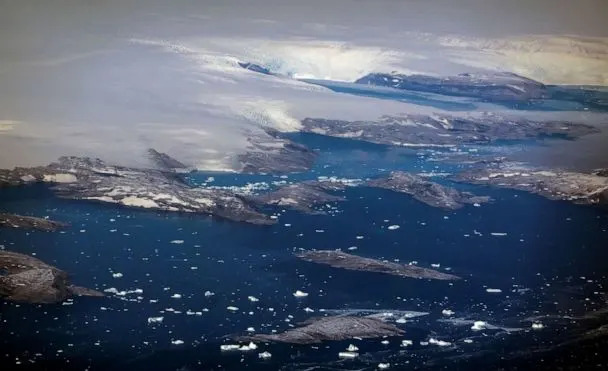
PHOTO: Icebergs and the edge of the ice sheet are seen at the
Scientists are also looking into whether the phenomenon of atmospheric blocking, is potentially linked with extreme summer or winter weather that occurs when the jet stream ebbs and causes weather patterns to stagnate over a period of time, Moon said.
That stagnation was likely the cause of the extreme flooding that occurred in 2017 in Houston, when the system from Hurricane Harvey remained over the region for days, dumping more than 50 inches of rain, and the multiple heatwaves that blanketed much of the Pacific Northwest this past summer, Moerman added.
"These have real-world impacts, whenever extreme cold air leaks out of the Arctic, because of that weakening polar vortex," Moerman said. "And it goes into areas that are not prepared for that extreme weather."
However, despite the existing evidence, more research needs to be done to further establish the link between the weakening polar vortex and extreme weather, Moerman said.
MORE: What to know about the rapid melting of the Greenland ice sheet, a significant contributor to rising sea levels
Shipping lanes will open
Melting sea ice in the Arctic is opening up lanes in the ocean for the global trade route -- lanes that were previously blocked.
In the near future, the melting will have a big impacts on major shipping laws, Schofield said.
"They're no longer going to be sending ships all the way down to the Panama Canal," he said. "They're going to go directly through the Arctic. And so it's going to change commerce, and have very large economic impacts."
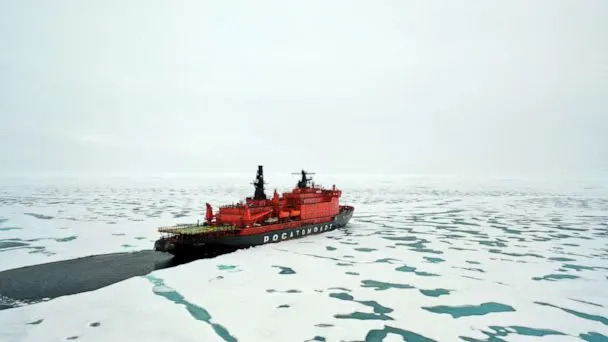
PHOTO: The Russian '50 Years of Victory' nuclear-powered icebreaker is seen at the North Pole on Aug. 18, 2021. (Ekaterina Anisimova/AFP via Getty Images, FILE)
But access has the potential to become a "hotbed for new conflict" as nations fight for control over the newly emerged routes, Moerman said.
"There's a lot of effort by countries to really try to claim as much territory as they can right now, because there's likely going to be a huge host of economic incentives to go to this new area and harvest what you can," Schofield said.
Some national security implications could occur as a result of the warming as well, as ice melts and opens up previously blocked landmasses, Moerman added. The U.S. Department of Defense will likely need to restructure its defense profile in the Arctic when there is no longer an ice cap for much of the year, Schofield said.
The pristine ecosystem will likely be ruined
As the woes from a stalled supply chain continue, the ability for shipping containers to utilize more routes in the absence of ice could appear to be beneficial for the world economy.
But it would spell disaster for the regional environment.
Right now, the ecosystem in the Arctic is pristine and untouched, and there are several unique species and ecosystems that have acclimated to the presence of ice, Schofield said.
But as more ships come in and out of the region, the chances that large-scale environmental degradation will occur is high, Moerman said.
"We're definitely seeing changes in animal populations," Moon said. "Certainly animals that depend on sea ice as a primary habitat, as we've lost the vast majority of our thicker sea ice."
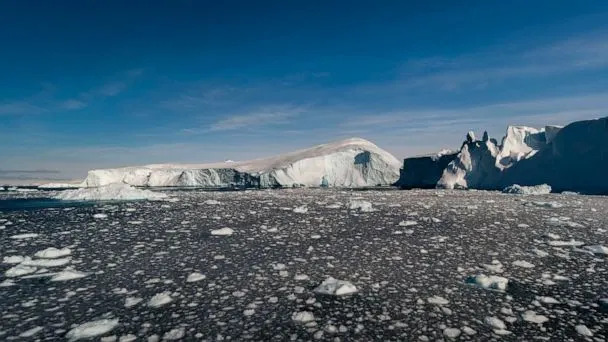
PHOTO: A view of icebergs and melting pack ice in Ilulissat icefjord, an UNESCO World Heritage Site, in Ilulissat, Greenland.
The "poster child" for the effects of the loss of sea ice on species is the polar bear, Schofield said. Polar bear populations have dwindled so low, and the habitats have become so fragmented, that the animals are inbreeding, which could have disastrous effects on the survival of the species within generations.
In Alaska, the number of beaver ponds has doubled since 2000, likely due to the warming trend that has resulted in widespread greening in what was previously tundra, the Arctic Report Card found. The rapid acidification of the warming ocean waters is likely affecting the marine food chain, Moon said. And the increased marine traffic for both fishing and shipping is also likely affecting stress levels and behavior of species, including how they communicate, Moon added.
In addition to an increased chance of oil spills from increased commercial activity is the possibility of new oil and gas fields opening up in Russian territory could further amplify global warming as those natural gases are extracted, Moerman said.
"The question is, is can we get those policies and strategies set up now before there's this massive sort of gold rush on the Arctic Ocean?" Schofield said.
Melting permafrost in the Arctic also poses natural environmental risks, Moon said. The majority of the ground in the Arctic is frozen, and as it thaws, microbes and other living organisms within the organic carbon in the permafrost begin to wake up, releasing carbon dioxide and methane into the atmosphere.
Temperatures need to be below 0 degrees Celsius to grow and maintain ice, Schofield said. But we will likely never regain that ice, as it took thousands of years of snow layers accumulating on top of each other to create the massive ice sheet, which is several miles thick.
"At some point, we're likely to cross the line where, you know, there'll be almost no winter to speak up," Schofield said. "And we see these kinds of effects in these polar regions, like the Arctic and the Antarctic."
Melting Arctic ice will have catastrophic effects on the world, experts say. Here's how. originally appeared on abcnews.go.com
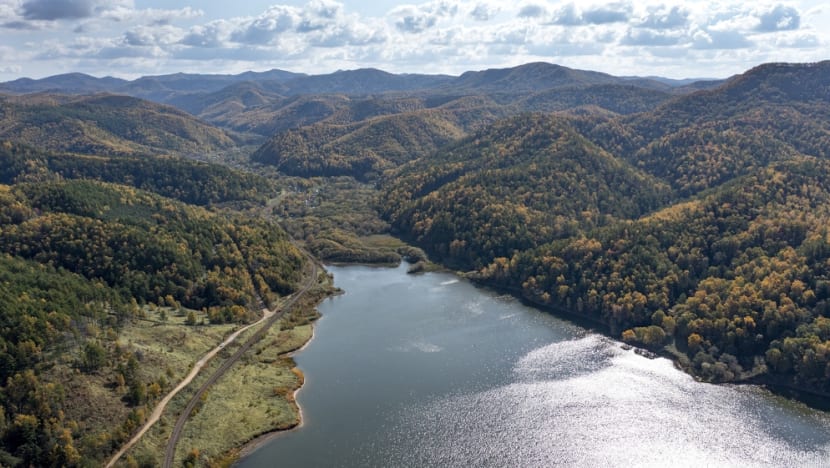



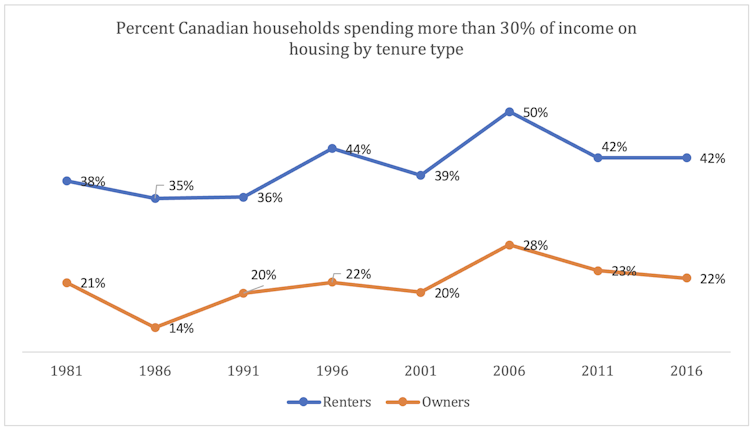
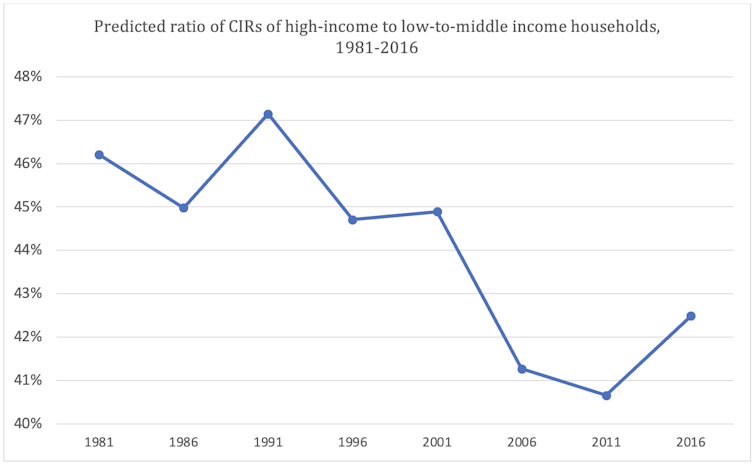
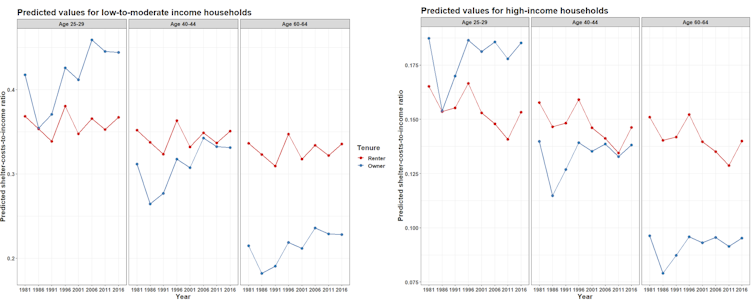
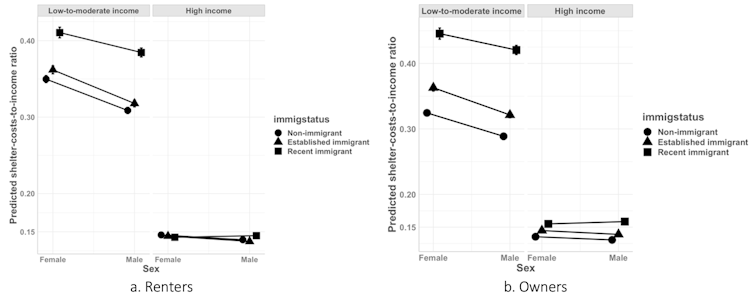


.jpg?ext=.jpg) Lubiatowo-Kopalinio is a coastal location whereas Żarnowiec is lakeside (Image: PEJ)
Lubiatowo-Kopalinio is a coastal location whereas Żarnowiec is lakeside (Image: PEJ)



